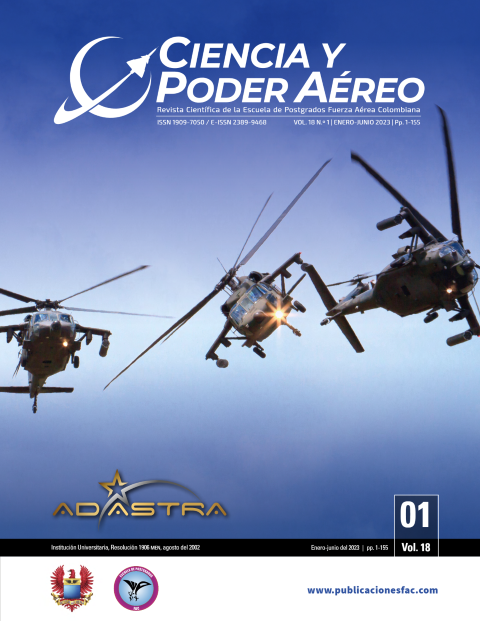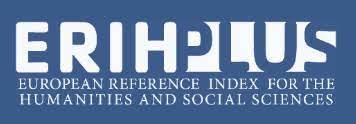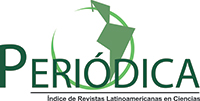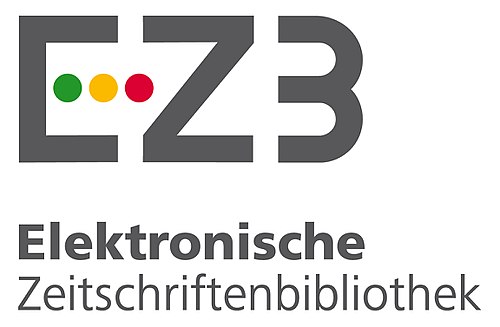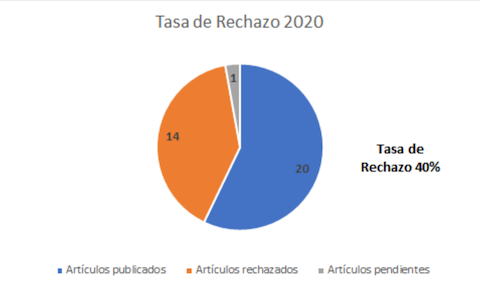Generalidades del ambiente de cabina de la Estación Espacial Internacional como análogo para misiones de tipo exploración: una visión desde la medicina aeroespacial
DOI:
https://doi.org/10.18667/cienciaypoderaereo.753Palabras clave:
Astronautas, estación espacial internacional, exposición ocupacional, fisiología espacial, medicina aeroespacial, vuelo espacialResumen
La salud y la seguridad de los astronautas en misiones de exploración espacial dependen del ambiente donde habitan, y la supervivencia en ambientes extremos requiere sistemas robustos que provean protección y les ofrezcan una atmósfera que les permita tener un desempeño normal en un entorno hostil. Es importante, entonces, conocer la cercana relación de los sistemas de soporte de vida, y el impacto en el bienestar de aquellos que trabajan en un espacio confinado con mínima utilización de recursos y energía.El objetivo de esta revisión es describir los sistemas de control ambiental y de soporte de vida de la Estación Espacial Internacional, y relatar el impacto en la salud y el rendimiento psicofísico de los astronautas si estos no funcionan normalmente. Se hacen búsquedas en las bases de datos Scopus, Ovid, arXiv.org, SAGE, BioMed, ClincalKey, ProQuest, EBSCP, SpringerLink, Web of Science, Google Scholar y Pubmed, que integren el sistema de control ambiental y soporte de vida con los fenómenos fisiopatológicos en caso de emergencia. Se recopilan 649 referencias con las estrategias de búsqueda y se restan aquellas repetidas (445) y cuyo texto completo no se consiguió (133), con un total de 71 referencias para análisis. Se discuten las características habitacionales de la Estación Espacial Internacional en términos de calidad y cantidad de aire disponible, la composición de los gases, la producción de oxígeno y nitrógeno, el barrido del dióxido de carbono y sus efectos en el astronauta bajo condiciones de microgravedad. Además, se exploran efectos toxicológicos, del ambiente microbiológico, acústica y vigilancia de la exposición a radiación electromagnética. Las futuras misiones de tipo exploración espacial necesitarán sistemas de control ambiental robustos con bajo riesgo de fallo y probable uso de recursos in situ.
Descargas
Referencias
American Conference of Governmental Industrial Hygienists (acgih). (2020). tlvs and beis based on the documentation of the threshold limit values for chemical substances and physical agents & biological exposure indices. acgih.
Alfano, C. A., Bower, J. L., Cowie, J., Lau, S. y Simpson, R. J. (2018). Long-duration space exploration and emotional health: Recommendations for conceptualizing and eval-uating risk. Acta Astronautica, 142, 289-299. https://doi.org/10.1016/j.actaastro.2017.11.009
Allen, J. G., MacNaughton, P., Satish, U., Santanam, S., Vallari-no, J. y Spengler, J. D. (2016). Associations of cognitive function scores with carbon dioxide, ventilation, and volatile organic compound exposures in office workers: A controlled exposure study of green and conventional office environments. Environmental Health Perspectives, 124(6), 805-812. https://doi.org/10.1289/ehp.1510037
Anders, G. y Selim, B. J. (2021). Sleep disordered breathing at high altitude. Complex sleep breathing disorders: A clini-cal casebook of challenging patient (C. Won, ed.; pp. 177-184). Springer. https://doi.org/10.1007/978-3-030-57942-5_16
Auerbach, P. S., Cushing, T. A. y Harris, N. S. (2016). Auerbach's wilderness medicine e-book. Elsevier Health Sciences.
Bagdigian, R. M., Dake, J., Gentry, G. y Gault, M. (2015). Inter-national Space Station environmental control and life support system mass and crew-time utilization in com-parison to a long duration human space exploration mission [ponencia]. 45th International Conference on Environmental Systems-ices, 13-17 July, Seattle, Wash-ington. http://hdl.handle.net/2346/64374
Barer, G. R., Howard, P. y Shaw, J. W. (1970). Stimulus - Re-sponse curves for the pulmonary vascular bed to hypoxia and hypercapnia. The Journal of Physiology, 211(1), 139-155. https://doi.org/10.1113/jphysiol.1970.sp009271
Barratt, M. R., Baker, E. S. y Pool, S. L. (2020). Principles of clinical medicine for space flight. Principles of clinical medicine for space flight (M. R. Barrat, Baker E. S y S. L. Pool, eds.). Springer Nature. https://doi.org/10.1007/978-1-4939-9889-0
Bayt, R. L. y Lueders, K. L. (2016). iss crew transportation and services requirements document. nasa. https://ntrs.nasa.gov/api/citations/20170001943/downloads/20170001943.pdf
Bejarano, X., Malpica, D., Cortés, D., Campos, C., Buitrago, N., Jiménez, G., Harasymczuk, M., Hettrich, S. y Kolodzie-jczyk, A. (2022). Astronaut training and analysis of human performance during the human operational research space analog simulation [ponencia]. 73rd International Astronautical Congress (iac).
Bijlani, S., Stephens, E., Singh, N. K., Venkateswaran, K. y Wang, C. C. C. (2021). Advances in space microbiology. IScience, 24(5), 102395. https://doi.org/10.1016/j.isci.2021.102395
Biswal M, M. K., Gómez-Fernández, D., Das, N. B. y Kumar V, R. (2021). Design study and validation of Mars under-ground habitat for human settlement on Mars. aiaa Pro-pulsion and Energy 2021 Forum. https://doi.org/10.2514/ 6.2021-3725
Cameron, P., Little, M. y Mitra, B. (2020). Textbook of adult emergency medicine (5.a ed.; vol. 1). Elsevier.
Carrasquillo, R. L., Reuter, J. L. Y Philistine, C. L. (1997). Sum-mary of resources for the International Space Station environmental control and life support system. sae Technical Paper. https://doi.org/10.4271/972332
Clément, G. (2011). Fundamentals of space medicine. Space technology library (2.a ed.; vol. 17). Microcosm Press; Springer. https://doi.org/10.1007/978-1-4419-9905-4
Connolly, D. M., Barbur, J. L., Hosking, S. L. y Moorhead, I. R. (2008). Mild hypoxia impairs chromatic sensitivity in the mesopic range. Investigative Ophthalmology & Vi-sual Science, 49(2), 820-827. https://doi.org/10.1167/iovs.07-1004
Connolly, D. M. y Hosking, S. L. (2006). Aviation-related respi-ratory gas disturbances affect dark adaptation: A reap-praisal. Vision Research, 46(11), 1784-1793. https://doi.org/10.1016/j.visres.2005.10.027
Cortright, E. M. (2019). Apollo expeditions to the Moon: The nasa history: 50th Anniversary Edition. Courier Dover Publications.
Creech, S., Guidi, J. y Elburn, D. (2022). Artemis: An overview of nasa's activities to return humans to the Moon. 2022 ieeeAerospace Conference (aero). Pages 1-7. https://doi.org/10.1109/AERO53065.2022.9843277
Davis, J. R., Johnson, R. y Stepanek, J. (2008). Fundamentals of aerospace medicine (4.a ed). Lippincott Williams & Wilkins.
De Aquino Lemos, V., Antunes, H. K. M., Dos Santos, R. V. T., Lira, F. S., Tufik, S. y De Mello, M. T. (2012). High altitude exposure impairs sleep patterns, mood, and cognitive functions. Psychophysiology, 49(9), 1298-1306. https://doi.org/10.1111/j.1469-8986.2012.01411.x
DeLucas, L. J. (1996). International Space Station. Acta Astro-nautica, 38(4-8), 613-619. https://doi.org/10.1016/0094-5765(96)00056-2
Deplano, R. (2021). The Artemis Accords: Evolution or Revolu-tion in International Space Law? International & Com-parative Law Quarterly, 70(3), 799-819. https://doi.org/10.1017/S0020589321000142
Eckart, P. (2013). Spaceflight life support and biospherics (vol. 5). Springer Science & Business Media.
Escobar, C., Nabity, J. y Escobar, A. (2019). Quantifying eclss ro-bustness for deep space exploration. https://hdl.handle.net/2346/84455
Escobar, C., Nabity, J. y Klaus, D. (2017). Defining eclss ro-bustness for deep space exploration. http://hdl.handle.net/2346/73061
Fortney, S. M., Mikhaylov, V., Lee, S. M., Kobzev, Y., Gonzalez, R. R. y Greenleaf, J. E. (1998). Body temperature and ther-moregulation during submaximal exercise after 115-day spaceflight. Aviation, Space, and Environmental Medicine, 69(2), 137-141. https://pubmed.ncbi.nlm.nih.gov/9491252/
Hall, J. E. y Hall, M. E. (2020). Guyton and Hall textbook of medi-cal physiology. Elsevier Health Sciences.
Hapke, J., Ranong, C. N., Brodt, K. y Tan, G. (2003). Tempera-ture and humidity control by means of a Membrane based Condensing Heat Exchanger (mchx). sae Technical Paper. https://doi.org/10.4271/2003-01-2628
Horie, M., Kambara, T., Kuroda, E., Miki, T., Honma, Y., Aoki, S. y Morimoto, Y. (2012). Possibility of exacerbation of aller-gy by lunar regolith. Journal of University of Occupation-al and Environmental Health, Japan uoeh, 34(3), 237-243. https://doi.org/10.7888/juoeh.34.237
Horng, C.-T., Liu, C.-C., Wu, D.-M., Wu, Y.-C., Chen, J.-T., Chang, C.-J. y Tsai, M.-L. (2008). Visual fields during acute expo-sure to a simulated altitude of 7620 m. Aviation, Space, and Environmental Medicine, 79(7), 666-669. https://doi.org/10.3357/asem.2160.2008
Institute of Electrical and Electronics Engineers (ieee). (2019). ieee Standard for Safety Levels with Respect to Human Exposure to Electric, Magnetic, and Electromagnetic Fields, 0 Hz to 300 GHz. https://doi.org/10.1109/IEEESTD. 2019.8859679
Jernigan, M., Gatens, R., Perry, J. y Joshi, J. (2018). The next steps for environmental control and life support systems development for deep space exploration. http://hdl.handle.net/2346/74222
Kennedy, A. R. (2014). Biological effects of space radiation and development of effective countermeasures. Life Scienc-es in Space Research, 1, 10-43. https://doi.org/10.1016/j.lssr.2014.02.004
Kourtidou-Papadeli, C. (2022). Effects of spaceflight on the ner-vous system. Handbook of Space Pharmaceuticals (Y. V. Pathak, M. Araújo dos Santos, L. Zea, eds.; pp. 521-553). Springer. https://doi.org/10.1007/978-3-030-05526-4_49
La Duc, M. T., Kern, R. y Venkateswaran, K. (2004). Microbi-al Monitoring of Spacecraft and Associated Environ-ments. Microbial Ecology, 47(2), 150-158. https://doi.org/10.1007/s00248-003-1012-0
Lam, C. W., Coleman, M. E. y García, H. D. (1997). Guidelines for assessing the toxic hazard of spacecraft chemicals and test materials. nasa-Johnson Space Center.
Law, J., Young, M., Alexander, D., Mason, S. S., Wear, M. L., Méndez, C. M., Stanley, D., Ryder, V. M. y Van Baalen, M. (2017). Carbon dioxide physiological training at nasa. Aerospace Medicine and Human Performance, 88(10), 897-902. https://doi.org/10.3357/amhp.4552.2017
Lee, P. H. U., Chung, M., Ren, Z., Mair, D. B. y Kim, D. H. (2022). Factors mediating spaceflight-induced skeletal muscle atrophy. American Journal of Physiology - Cell Physiol-ogy, 332(3). https://doi.org/10.1152/ajpcell.00203.2021
Ley, W., Wittmann, K. y Hallmann, W. (Eds.) (2009). Handbook of Space Technology (vol. 22). John Wiley & Sons. https://doi.org/10.1002/9780470742433
Lovell, J. y Kluger, J. (2006). Apollo 13. Houghton Mifflin Harcourt.
Man, J., Graham, T., Squires-Donelly, G. y Laslett, A. L. (2022). The effects of microgravity on bone structure and func-tion. npj Microgravity, 8(1), 1-15. https://doi.org/10.1038/s41526-022-00194-8
National Aeronautics and Space Administration (nasa). (2019). nasaSpaceflight Human-System Standard. Volume 2: Hu-man factors, habitability, and environmental health. nasa.
Newkirk, D. (1990). Almanac of soviet manned space flight. Gulf Pub Co.
Nicogossian, A. E., Williams, R. S., Huntoon, C. L., Doarn, C. R., Polk, J. D. y Schneider, V. S. (2016). Space physiology and medicine: From evidence to practice (4.a ed.). Springer. https://doi.org/10.1007/978-1-4939-6652-3
Pagel, J. I. y Choukèr, A. (2016). Effects of isolation and con-finement on humans-implications for manned space explorations. Journal of Applied Physiology, 120(12), 1449-1457. https://doi.org/10.1152/japplphysiol.00928.2015
Pérez-Vara, R., Mannu, S., Pin, O. y Müller, R. (2003). Overview of European Applications of EcosimPro to eclss, celss, and atcs. sae Technical Paper. https://doi.org/10.4271/2003-01-2439
Perry, J. L. (2017). Trace contaminant control for the Interna-tional Space Station's Node 1 - Analysis, Design, and Ver-ification. nasa Technical Publication.
Peterson, L. J. (2013). Environmental Control and Life Support System (eclss) System Engineering Workshop. BiblioGov.
Petrassi, F. A., Hodkinson, P. D., Walters, P. L. y Gaydos, S. J. (2012). Hypoxic hypoxia at moderate altitudes: review of the state of the science. Aviation, Space, and Envi-ronmental Medicine, 83(10), 975-984. https://doi.org/10.3357/asem.3315.2012
Pickett, L., Connolly, J., Arch, M., Tillman, B. y Russo, D. (2007). nasa-std 3001 and the Human Integration Design Hand-book (hidh): Evolution of nasa-std-3000. https://ntrs.nasa.gov/citations/20070017247
Pierson, D. L. (2007). Microbial contamination of space-craft. Gravitational and Space Research, 14(2). https://pubmed.ncbi.nlm.nih.gov/11865864/
Polyakov, V. V, Lacota, N. G. y Gundel, A. (2001). Human ther-mohomeostasis onboard "Mir" and in simulated mi-crogravity studies. Acta Astronautica, 49(3-10), 137-143.https://doi.org/10.1016/S0094-5765(01)00091-1
Raichle, M. E. y Gusnard, D. A. (2002). Appraising the brain's energy budget. Proceedings of the National Academy of Sciences, 99(16), 10237-10239. https://doi.org/10.1073/pnas.172399499
Rainford, D. y Gradwell, D. P. (2016). Ernsting's aviation and space medicine (5.a ed). crc Press; Taylor & Francis Group.
Ridley, A. H., Shaw, L. A., Brown, C. A., Garr II, J. D., Gavin, L. L., Hornyak, D. M., Matty, C. M., Toon, K. P. y Caradec, P. A. (2022). International Space Station as a testbed for exploration environmental control and life support sys-tems-2022 Status [ponencia]. 51st International Confer-ence on Environmental Systems ices.
Robinson, J. A., Waid, M. C., Korth, D., Rucker, M. y Renfrew, R. (2019). Innovative approaches to using the International Space Station as a Mars-transit analog [ponencia]. Inter-national Astronautical Congress.
Rodeheffer, C. D., Chabal, S., Clarke, J. M. y Fothergill, D. M. (2018). Acute exposure to low-to-moderate carbon di-oxide levels and submariner decision making. Aero-space Medicine and Human Performance, 89(6), 520-525. https://doi.org/10.3357/AMHP.5010.2018
Rose, D. (1998). International space station familiarization. En Progressive Management, Inside the International Space Station (iss): nasa International Space Station Familiariza-tion Astronaut Training Manual - Comprehensive Review of iss Systems. nasa.
Ryder, V., McCoy, J. y Hayes, J. (2020). Spacecraft maximum al-lowable concentrations for airborne contaminants. nasa. https://standards.nasa.gov/standard/jsc/jsc-20584
Satish, U., Mendell, M. J., Shekhar, K., Hotchi, T., Sullivan, D., Streufert, S. y Fisk, W. J. (2012). Is CO2 an indoor pol-lutant? Direct effects of low-to-moderate CO2 concen-trations on human decision-making performance. Environmental Health Perspectives, 120(12), 1671-1677. https://doi.org/10.1289/ehp.1104789
Scully, R. R., Basner, M., Nasrini, J., Lam, C.-W., Hermosillo, E., Gur, R. C., Moore, T., Alexander, D. J., Satish, U. y Ryder, V. E. (2019). Effects of acute exposures to carbon diox-ide on decision making and cognition in astronaut-like subjects. npj Microgravity, 5(1). https://doi.org/10.1038/s41526-019-0071-6
Seedhouse, E. (2020). Life support systems for humans in space. Springer. https://doi.org/10.1007/978-3-030-52859-1
Siegel, B., Spry, J. A., Wallace, S. L., Robinson, J. A., Broyan, J. y Mahoney, E. (2022). Development of a nasa Roadmap for Planetary Protection to prepare for the first Human Mis-sions to Mars [ponencia]. 44th cospar Scientific Assem-bly, 16-24 July.
Son, C. H., Zapata, J. L. y Lin, C.-H. (2002). Investigation of air-flow and accumulation of carbon dioxide in the service module crew quarters. sae Technical Paper. https://doi.org/10.4271/2002-01-2341
Stadelmann, K., Latshang, T. D., Tarokh, L., Lo Cascio, C. M., Tesler, N., Stoewhas, A., Kohler, M., Bloch, K. E., Huber, R. y Achermann, P. (2014). Sleep respiratory disturbanc-es and arousals at moderate altitude have overlapping electroencephalogram spectral signatures. Journal of Sleep Research, 23(4), 463-468. https://doi.org/10.1111/jsr.12131
Stahn, A. C., Werner, A., Opatz, O., Maggioni, M. A., Steinach, M., Von Ahlefeld, V. W., Moore, A., Crucian, B. E., Smith, S. M., Zwart, S. R., Schlabs, T., Mendt, S., Trippel, T., Koralews-ki, E., Koch, J., Chouker, A., Reitz, G., Shang, P., Röcker, L., et al. (2017). Increased core body temperature in as-tronauts during long-duration space missions. Scien-tific Reports, 7(1), 1-8. https://epub.ub.uni-muenchen.de/50239/ https://doi.org/10.1038/s41598-017-15560-w
Stambaugh, I. C., Baccus, S., Naids, A. J., Borrego, M., Hanford, A., Eckhardt, B., Allada, R. K. y Yagoda, E. (2013). Environ-mental controls and life support system (eclss) design for a multi-mission space exploration vehicle (mmsev). 43rd International Conference on Environmental Systems. https://doi.org/10.2514/6.2013-3428
Stapleton, T., Heldmann, M., Schneider, S., O'Neill, J., Sam-platsky, D., White, K. y Corallo, R. (2016). Environmental control and life support for deep space travel. http://hdl.handle.net/2346/74271
Swenson, E. R. y Bärtsch, P. (2021). The search for a model of high-altitude pulmonary oedema must continue. Acta Physiologica, 231(1), e13485. https://doi.org/10.1111/apha.13485
Tanaka, K., Nishimura, N. y Kawai, Y. (2017). Adaptation to mi-crogravity, deconditioning, and countermeasures. The Journal of Physiological Sciences, 67(2), 271-281. https://doi.org/10.1007/s12576-016-0514-8
Terhorst, A. y Dowling, J. A. (2022). Terrestrial analogue re-search to support human performance on Mars: A review and bibliographic analysis. https://downloads.spj.sci-encemag.org/space/aip/9841785.pdf https://doi.org/10.34133/2022/9841785
Thomas, K. S. y McMann, H. J. (2011). us spacesuits. Springer Science & Business Media. https://doi.org/10.1007/978-1-4419-9566-7
Townsend, L. W. y Fry, R. J. M. (2002). Radiation protection guidance for activities in Low-Earth orbit. Advances in Space Research, 30(4), 957-963. https://doi.org/10.1016/S0273-1177(02)00160-6
Turner, C. E., Byblow, W. D. y Gant, N. (2015). Creatine sup-plementation enhances corticomotor excitability and cognitive performance during oxygen deprivation. Journal of Neuroscience, 35(4), 1773-1780. https://doi.org/10.1523/JNEUROSCI.3113-14.2015
Venkat, D., Dhillon, K. y Rowley, J. A. (2021). Effects of high alti-tude on sleep and respiratory system. Current Pulmonol-ogy Reports, 10, 103-109. https://doi.org/10.1007/s13665-021-00276-0
Virts, T. (2020). How to astronaut: An insider's guide to leaving planet Earth. Workman Publishing.
Vogt, C., Monai, M., Kramer, G. J. y Weckhuysen, B. M. (2019). The renaissance of the Sabatier reaction and its applica-tions on Earth and in space. Nature Catalysis, 2(3), 188-197. https://doi.org/10.1038/s41929-019-0244-4
Williams, D., Dake, J. y Gentry, G. (2012). International Space Station environmental control and life support system status for the prior year: 2010-2011 [ponencia]. 42nd In-ternational Conference on Environmental Systems https://doi.org/10.2514/6.2012-3612
Publicado
Número
Sección
Licencia
Derechos de autor 2022 Escuela de Postgrados de la Fuerza Aérea Colombiana

Esta obra está bajo una licencia internacional Creative Commons Atribución 4.0.
Declaración de cesión de los derechos de autor a la revista
Los autores ceden la Revista los derechos de explotación (reproducción, distribución, comunicación pública y transformación) para explotar y comercializar la obra, entera o en parte, en todos los formatos y modalidades de explotación presentes o futuros, en todos los idiomas, por todo el periodo de vida de la obra y por todo el mundo.
Todos los contenidos publicados en la revista científica Ciencia y Poder Aéreo están sujetos a la licencia reconocimiento 4.0 Internacional de Creative Commons, cuyo texto completo se puede consultar en http://creativecommons.org/licenses/by/4.0/
La licencia permite a cualquier usuario descargar, imprimir, extraer, archivar, distribuir y comunicar públicamente este artículo, siempre y cuando el crédito se dé a los autores de la obra: a los autores del texto y a Ciencia y Poder Aéreo, Revista Científica de la Escuela de Postgrados de la Fuerza Aérea Colombiana. Excepto cuando se indique lo contrario, el contenido en este sitio es licenciado bajo una licencia Creative Commons Atribución 4.0 internacional.
Para usos de los contenidos no previstos en estas normas de publicación es necesario contactar directamente con el director o editor de la revista a través del correo cienciaypoderaereo@epfac.edu.
La Escuela de Postgrados de la Fuerza Aérea Colombiana y esta publicación no son responsables de los conceptos emitidos en los artículos, ni de los metadatos aportados ni de las filiaciones que los autores declaren, ya que esta es responsabilidad plena de los autores.


